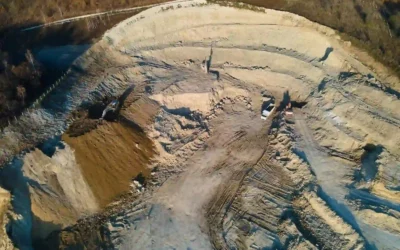Clean, safe drinking water is a fundamental human need. As the world’s population grows and water sources are increasingly affected, the need for efficient water treatment systems is more crucial than ever. Silica sand, a naturally abundant and cost-effective material, has emerged as a popular choice for water filtration systems worldwide. In this article, we will explore the advantages of using silica sand in water filtration and how it compares to alternative filtration media.
Silica sand: an effective filtration medium
High purity
The high purity of silica sand makes it an ideal filtration medium. Its low clay, silt and organic matter content ensures that the water passing through the filter is not contaminated by impurities present in the sand. This high level of purity contributes to the production of clean and safe drinking water.
Particle size and shape
The uniform particle size and angular shape of silica sand contribute to its effectiveness as a filter medium. Uniform size distribution allows for more efficient water flow through the filter, resulting in better contaminant removal. The angular shape of the silica sand particles increases the surface area available for adsorption of impurities, further improving the filtration process.
Mechanical resistance
The mechanical strength of silica sand ensures that the filter media remains intact over time, even under high pressure. This durability allows for long-term use of silica sand in water filtration systems, reducing the need for frequent replacement and lowering maintenance costs.
Chemical inertness
Silica sand is chemically inert, which means that it does not react with chemicals used in water treatment processes. This inertness ensures that the sand will not introduce unwanted chemicals into the water supply, maintaining the quality and safety of the treated water.
Comparison of silica sand to alternative filtration media
Activated carbon
Activated carbon is a widely used filtration medium, known for its high adsorption capacity. While very effective at removing organic compounds, odors and flavors, activated carbon can be significantly more expensive than silica sand. In addition, it may require more frequent replacement due to its lower mechanical strength.
Anthracite
Anthracite, a type of coal, is another common filtration medium. It has a high specific gravity, which allows efficient removal of suspended particles. However, anthracite can be more expensive than silica sand and may not be as readily available in all regions.
Zeolite
Zeolite is a natural mineral with a unique porous structure that allows the efficient removal of contaminants. Although it has some advantages over silica sand, such as the ability to remove ammonia and heavy metals, zeolite is generally more expensive and can be more difficult to obtain. Silica sand has established itself as an efficient and cost-effective material for water filtration systems worldwide. Its high purity, uniform particle size, mechanical strength and chemical inertness contribute to its growing popularity as a filtration media. While alternative filtration media may offer specific advantages in certain applications, the accessibility and affordability of silica sand make it an attractive option for water treatment plants seeking to provide clean, safe drinking water for their communities.






